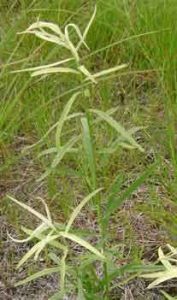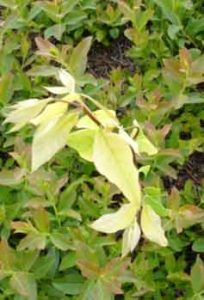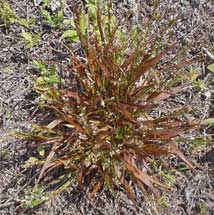256-Mesotrione Use in Wild Blueberries
Fact Sheet No. 256, UMaine Extension No. 2147
Prepared by David E. Yarborough, Extension Blueberry Specialist, and Jennifer L. D’Appollonio, Research Assistant, The University of Maine, Orono, ME 04469. February 2009.
NOTICE: It is unlawful to use any pesticide for other than the registered use. Read and follow the label on the product container. The user assumes all responsibility for use inconsistent with the label.
WARNING! Pesticides are potentially hazardous. Handle carefully! Read and follow all directions and precautions on labels. Store in original labeled containers out of reach of children, pets, and livestock. Dispose of empty containers at once, in a safe manner and place. Do not contaminate forage, streams, ponds or groundwater recharge areas. Trade names are used for identification. No product endorsement is implied, nor is discrimination intended against similar materials. Cooperative Extension makes no warranty or guarantee of any kind concerning the use of these products.
Introduction
Mesotrione, trade name Callisto, is a broadleaf herbicide with a supplemental label for use on wild blueberry fields in the non-bearing year. This factsheet provides background information on the mode of action, guidelines for proper application, and general information about the predicted level of weed control based on research from Maine and Canada. Callisto should be used to supplement current weed control practices, and may be used in a herbicide rotation but it is not considered to be a replacement for hexazinone (Velpar).
Mode of Action
Mesotrione is a systemic herbicide with both preemergence and postemergence activity. This herbicide inhibits plant pigment biosynthesis, specifically an enzyme called p-hydroxyphenylpyruvate dioxygenase (HPPD). Because mesotrione inhibits amino acid conversion and carotenoid biosynthesis, this results in the plant being unable to protect chlorophyll from decomposition by sunlight. Bleaching occurs within a week, but plant death may take up to two weeks. When applied preemergence, weeds take up the product through soil during emergence and growth. When applied postemergence, weeds take up mesotrione through the foliage and/or the soil and will cease growth shortly thereafter. Less susceptible plants may show symptoms and then recover. Callisto has been shown to be effective on many weeds resistant to triazine, sulfonylurea, or other ALS-inhibiting herbicides and so will be valuable as a rotation herbicide to present herbicide resistance.
Application Considerations
Callisto may be applied as a broadcast or spot application only during the non-bearing year of the wild blueberry crop cycle. Up to 6 oz/a may be applied per year, either as a single preemergence application or as one or two 3 oz./a postemergence applications. No more than two applications and 6 oz./a total product is allowed per year. If two applications are made, they must occur at least fourteen days apart. When combined in a tank mix with hexazinone (Velpar) as a preemergence application increased weed control activity was obtained. Callisto may be applied postemergence after a preemergence herbicide to control those weeds escaping the first application and in another two weeks after the first preemergence application. Most weeds are controlled best when they are smaller, so early scouting and detection are important. Waiting too late in the season will lead to less effective control.
The label recommends the use of an adjuvant or surfactant when applied to the foliage. A crop oil concentrate (COC) type adjuvant should be mixed at a rate of 1% of the volume of the adjuvant to the volume of the solution (v/v). Nonionic surfactants may be used at 0.25% v/v, but COCs have consistently shown better weed control. If you add a spray grade fertilizer UAN to the spray solution at a rate of 2.5 % v/v or AMS at 8.5 lb./100 gal. of spray solution; this will improve the effectiveness of the herbicide. Use spray nozzles that provide medium to coarse droplet size; nozzle screens should be 50 mesh or coarser and boom height should be at least fifteen inches above the crop canopy. Spray volume should be 10 to 30 gal./a at 35 to 40 psi, unless extended range or drift reduction nozzles are used. If applying postemergence, flat fan nozzles of 80° or 110° should be used; do not use with floodjet nozzles or controlled droplet application equipment.
There are currently no herbicides listed on the label for tank-mixes with Callisto on wild blueberry. Tank mix combinations with sethoxydim (Poast) and fluazifop-P-butyl (Venture) have been used in Maine and Canada to improve grass control without injury to wild blueberries. Avoid postemergence application within seven days of organophosphate or carbamate insecticides applications as this has caused crop injury in corn.
Do not apply directly to water, areas where surface water is present, or intertidal areas below the mean high water mark. Callisto has a high potential for runoff for several weeks after application, with poorly draining soils and soils with shallow water tables more prone to producing contaminated runoff. Do not apply when heavy rainfall is forecasted to occur within 48 hours. Efficacy may be reduced or delayed if weeds are stressed due to heat, drought, flooding or prolonged cool temperatures. Do not apply Callisto through any type of irrigation system or with suspension fertilizers as the carrier.
Effect on Common Blueberry Weed Species
The information below was compiled from the Callisto label, Callisto supplemental label, growers, and research trials performed by researchers at the University of Maine, Nova Scotia Agricultural College and New Brunswick Department of Agriculture and Aquaculture. This list is a general guideline to the weed control spectrum of Callisto, and does not guarantee performance. Herbicide efficacy may be influenced by factors such as site history, herbicide rate, surfactant type and rate, weed growth stage, weather, and genetic differences in weed populations. Weeds listed under “Variable Activity” have shown some early herbicide injury but have shown regrowth or have not been controlled as of late in the growing season, or have shown suspected control in a limited number of locations. Weeds listed under “Inconsistent Activity” have shown limited early season symptoms with no late season control. Callisto is not effective for the control of most grass weeds but can control sedges and rushes.
Weeds Controlled on Label: Lamb’s-quarters, redroot pigweed, velvetleaf, wild mustard, Eastern black nightshade, ragweed (suppressed).
Variable Activity: Black bulrush, bracken fern, vetch, Canada goldenrod, narrow-leaved goldenrod, yellow-hop clover, lance-leaved violet, sheep sorrel, spreading dogbane, five-fingered cinquefoil, bladder campion.
Inconsistent Activity: Hawkweed, white clover, lily/orchid spp., poplar, willow, maple, sedge species, rush species, caneberries (Rubus spp.), beggarticks, New York aster, quackgrass, ticklegrass, bunchberry, St. Johnswort, three-toothed cinquefoil, wild rose.
- Figure 1: Incomplete control of goldenrod.
- Figure 2: Dogbane control with early application.
- Figure 3: Sedge control with early application.
Information in this publication is provided purely for educational purposes. No responsibility is assumed for any problems associated with the use of products or services mentioned. No endorsement of products or companies is intended, nor is criticism of unnamed products or companies implied.
© 2009
Call 800.287.0274 (in Maine), or 207.581.3188, for information on publications and program offerings from University of Maine Cooperative Extension, or visit extension.umaine.edu.
The University of Maine is an EEO/AA employer, and does not discriminate on the grounds of race, color, religion, sex, sexual orientation, transgender status, gender expression, national origin, citizenship status, age, disability, genetic information or veteran’s status in employment, education, and all other programs and activities. The following person has been designated to handle inquiries regarding non-discrimination policies: Director of Equal Opportunity, 101 Boudreau Hall, University of Maine, Orono, ME 04469-5754, 207.581.1226, TTY 711 (Maine Relay System).



